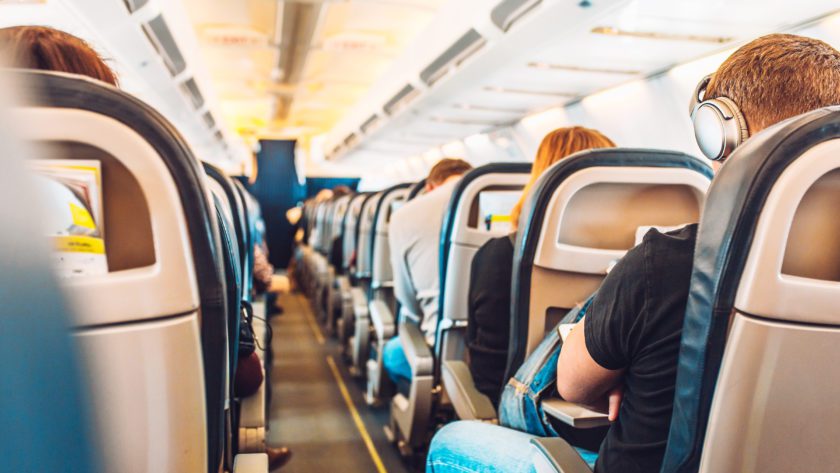As more people get the COVID-19 vaccine and consumer confidence grows, the Transportation Security Administration (TSA) said 7.1 million people were screened at U.S. airport checkpoints from Thursday through Sunday of Memorial Day weekend 2021.
Friday was the highest single travel day since March 2020, when only 1.96 million people were screened due to COVID-19. With record air travel numbers being reported recently, here are some tips to remind us of some very important air safety precautions.
Get Fit
This is not so much a question of looking good, but in an emergency evacuation, you will need considerable strength, agility and balance to save your life.
Remember, if the cabin fills with smoke, you’ll need to be able to get down on the floor and crawl to get to an exit. This can be problematic if you’re not very flexible and can’t move quickly.
NOTE: According to the National Transportation Safety Board, 76% of the passengers in the most devastating airplane crashes survive, but it’s necessary to be able to save yourself.
Pay Attention to How You Dress (Think Beyond the Mask)
What you (and your children) wear matters when flying.
- Don’t wear synthetics, such as polyester, nylon, rayon or poly-cotton blends. Even though you may be far enough from the fire to avoid serious injury, the heat alone will melt your synthetic clothing and adhere to your bare skin.
Melted fabric that sticks to flesh can result in a critical burn and infection. However, at the same distance away from the heat, a cotton jacket or pair of pants won’t begin to char or catch fire. The bottom line is, natural fibers are safer, plastic is dangerous.
- Wear natural fibers, such as cotton, pure wool, silk, or leather. Cotton is flammable, but in a truly massive and intense fire, whether your clothes are flammable or not won’t matter much unfortunately.
NOTE: Some cotton shirts are sewn with poly/cotton thread (an ignition source), so you could still be vulnerable.
- Wear long pants and long sleeves. Skip the short skirts, shorts and skimpy T-shirts. Protect your arms and legs. Heavy denim pants (but NOT ripped jeans) and a cotton long-sleeved shirt are best.
- Wear comfortable, unrestrictive clothing. If your clothes are tight, you won’t be able to move quickly and easily in an emergency evacuation.
- Wear layers. Two layers are better than one. You can wear a 100% cotton long-sleeved shirt under a cotton jacket. Add a cotton T-shirt under your shirt for another layer of protection.
- Don’t wear frayed or fuzzy clothing. A frayed cotton jacket, shirt or jeans with its dangling cotton threads can ignite when exposed to even the smallest flame.

Frayed clothing (including ripped jeans) can easily ignite.
- Wear sturdy, closed-toed shoes with secure laces or straps. Leather is the best heat-resistant footwear material. For the best protection against heat, wear leather boots, but be sure they have heat-resistant thread and laces.
Leave your heels, flip-flops and sandals in your luggage. Heels can actually puncture an airline’s escape slide and you’ll have to remove your shoes in an emergency.
- Wear cotton or wool socks. In this case, the longer they are, the better.
- Carry a cotton/wool scarf or N95 mask. In a fire, wear this over your mouth and nose as a smoke filtering mask.
- Wear a medical identification tag. It’s important for emergency personnel to know that you have a medical issue, such as asthma, a blood disorder, heart condition, or rare blood type.
High-stress emergencies can trigger a heart attack or can bring on an asthma attack in heavy smoke. If your emergency information is in your bag or purse, you’ll likely not have it with you in an evacuation.

![]() Karen’s Fit Tip: Keep a copy of these tips in your suitcase as a reminder when preparing for your next trip. And remember… if your clothing catches fire, STOP, DROP, AND ROLL!
Karen’s Fit Tip: Keep a copy of these tips in your suitcase as a reminder when preparing for your next trip. And remember… if your clothing catches fire, STOP, DROP, AND ROLL!


